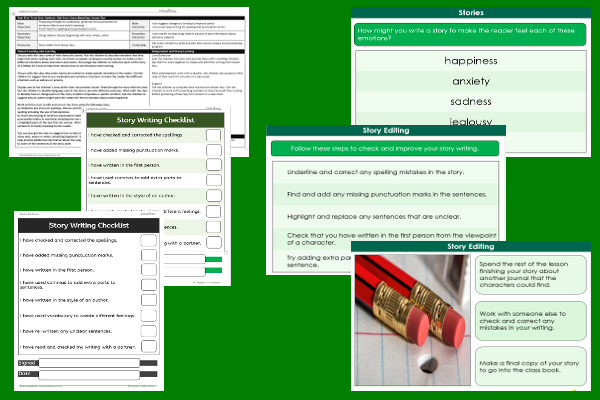Lesson Five – Story Editing

This English teaching pack for Key Stage Two gets the children to edit and redraft a new section for an adventure story to suggest what other events might happen in the narrative to match the writing style and techniques of a significant author.
The class can explain and model how to proof read and correct their story writing for spelling, punctuation and grammar errors when presenting a final copy for publication.
Download this teaching pack including a lesson plan, classroom activities and an interactive presentation to edit and redraft a new section for an adventure story to suggest what other events might happen in the narrative to match the writing style and techniques of a significant author
Activities in this teaching pack include a worksheet to practise proof reading and correcting a narrative story writing for spelling, punctuation and grammar errors and mistakes and make sure it matches the writing style and techniques of a significant author.
The interactive presentation gets the children to explore how to edit and redraft a new section for a story to suggest what other events might happen in the narrative.
This lesson is part of an English scheme of work to get the children to plan and write a story using different narrative techniques, identify the meanings of words that are homonyms and practise extending sentences by using commas to add extra words and phrases. There are teaching activities for shared learning, differentiated worksheets to support independent learning and interactive presentations to introduce concepts and key skills.
-

School Grounds
Explain and model how to measure and calculate the perimeters and areas of different shaped locations around the school grounds
-

Rainforest Presentations
Select, manipulate and combine different forms of media to create a multimedia presentation about an aspect of life in a rainforest habitat
-

Flag Printing
Practise and refine different techniques when printing colours, shapes and patterns to design flags to match specific locations
-

Angle Observations
Identify, locate and classify examples of right, acute and obtuse angles that can be observed in a range of different shapes, objects and locations
